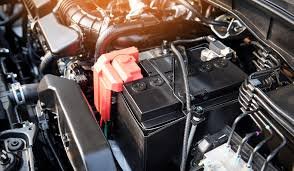
The Life of a Car Battery in a Rancho Cucamonga Repair Shop
Introduction
Car batteries are essential components of any vehicle, providing the necessary power to start the engine and run electrical systems. In Rancho Cucamonga, where temperatures can fluctuate significantly between hot summers and mild winters, the lifespan of a car battery is influenced by various factors. This article explores the life cycle of a car battery, common issues affecting its longevity, and how repair shops in Rancho Cucamonga diagnose, maintain, and replace car batteries.
1. Understanding Car Battery Basics
1.1 What Is a Car Battery?
A car battery is a rechargeable device that supplies electrical energy to a vehicle. It powers the starter motor, ignition system, and other electronics when the engine is off. Most vehicles use lead-acid batteries, though newer models may feature AGM (Absorbent Glass Mat) or lithium-ion batteries for improved performance.
1.2 How Does a Car Battery Work?
- The battery stores chemical energy and converts it into electrical energy.
- When the engine starts, the battery sends a high-voltage current to the starter motor.
- Once the engine runs, the alternator recharges the battery.
2. Factors Affecting Car Battery Life in Rancho Cucamonga
Rancho Cucamonga’s climate, driving habits, and maintenance practices impact battery longevity.
2.1 Climate Conditions
- Extreme Heat: High temperatures accelerate battery fluid evaporation, leading to internal damage.
- Mild Winters: While not as harsh as colder regions, occasional cold snaps can reduce battery efficiency.
2.2 Driving Habits
- Short Trips: Frequent short drives prevent the battery from fully recharging.
- Infrequent Use: Cars left unused for long periods experience battery drain.
2.3 Electrical Load
- Modern vehicles with advanced electronics (infotainment systems, dash cams, etc.) put more strain on the battery.
2.4 Battery Maintenance
- Corrosion on terminals reduces conductivity.
- Low electrolyte levels (in non-sealed batteries) can damage cells.
3. Average Lifespan of a Car Battery
- Standard Lead-Acid Battery: 3–5 years
- AGM Battery: 4–6 years
- Lithium-Ion Battery: 7–10 years (less common in traditional vehicles)
In Rancho Cucamonga, the average battery lifespan tends to be on the lower end due to heat exposure.
4. Signs of a Failing Car Battery
Recognizing early symptoms can prevent unexpected breakdowns:
4.1 Slow Engine Crank
- The engine takes longer to start, indicating weak battery power.
4.2 Dimming Headlights and Electrical Issues
- Lights flicker or dim when idling.
- Power windows and radio respond sluggishly.
4.3 Swollen or Leaking Battery Case
- Excessive heat can cause the battery to bulge or leak acid.
4.4 Frequent Jump-Starts Needed
- If the battery dies repeatedly, it’s likely nearing the end of its life.
4.5 Check Engine or Battery Warning Light
- Modern cars may display a warning when battery voltage is low.
5. How Rancho Cucamonga Repair Shops Test and Diagnose Battery Issues
Auto repair shops in Rancho Cucamonga use several methods to assess battery health:
5.1 Voltage Test
- A multimeter checks the battery’s voltage:
- 12.6V+ (Fully charged)
- 12.4V (Partially charged)
- Below 12.2V (Weak, needs charging or replacement)
5.2 Load Test
- Simulates engine starting conditions to see if the battery holds voltage under stress.
5.3 Conductance Test
- Advanced testers measure the battery’s ability to hold a charge.
5.4 Visual Inspection
- Technicians check for:
- Corrosion on terminals
- Cracked casing
- Loose connections
6. Battery Maintenance Tips from Rancho Cucamonga Mechanics
Extend battery life with these best practices:
6.1 Regular Cleaning
- Remove corrosion from terminals using a baking soda and water solution.
6.2 Secure Battery Connections
- Ensure terminals are tight to prevent power loss.
6.3 Avoid Parasitic Drain
- Unplug devices when the car is off.
- Fix faulty wiring that may cause constant power draw.
6.4 Keep the Battery Charged
- Use a trickle charger if the car sits unused for weeks.
6.5 Park in Shade When Possible
- Reduces heat exposure, prolonging battery life.
7. When to Replace a Car Battery
Rancho Cucamonga auto shops recommend replacement if:
- The battery is over 3–4 years old (especially in hot climates).
- It fails a load or conductance test.
- The vehicle requires frequent jump-starts.
7.1 Choosing the Right Replacement Battery
- Group Size: Must match the vehicle’s specifications.
- Cold Cranking Amps (CCA): Higher CCA is better for extreme temperatures.
- Reserve Capacity (RC): Indicates how long the battery can run without the alternator.
7.2 Professional Installation
- Repair shops ensure proper installation, including:
- Cleaning terminals
- Securing the battery
- Testing the charging system
8. Common Car Battery Myths Debunked
8.1 “A Dead Battery Can Always Be Recharged”
- Deeply discharged or old batteries may not recover.
8.2 “All Batteries Last the Same Amount of Time”
- Quality, usage, and climate greatly affect lifespan.
8.3 “You Don’t Need to Maintain Maintenance-Free Batteries”
- Even sealed batteries benefit from terminal cleaning and voltage checks.
9. The Role of Alternator and Charging System in Battery Life
A failing alternator can mimic battery problems. Rancho Cucamonga mechanics check:
- Alternator output (should be 13.8V–14.4V)
- Belt tension and condition
- Voltage regulator function
10. Eco-Friendly Battery Disposal in Rancho Cucamonga
Old car batteries contain hazardous materials. Repair shops follow California regulations by:
- Recycling through certified programs.
- Ensuring safe handling of lead and acid.
11. Cost of Car Battery Replacement in Rancho Cucamonga
- Standard Battery: 100–200
- AGM Battery: 200–300
- Labor Costs: 20–50 (most shops include free installation with purchase)
12. Conclusion
The life of a car battery in Rancho Cucamonga depends on climate, driving habits, and maintenance. Regular testing and proper care can extend its lifespan, but once signs of failure appear, timely replacement is crucial. Local repair shops provide essential services—from diagnostics to eco-friendly disposal—ensuring drivers stay safe on the road.
By understanding battery health and working with trusted mechanics, Rancho Cucamonga residents can avoid unexpected breakdowns and keep their vehicles running smoothly.
